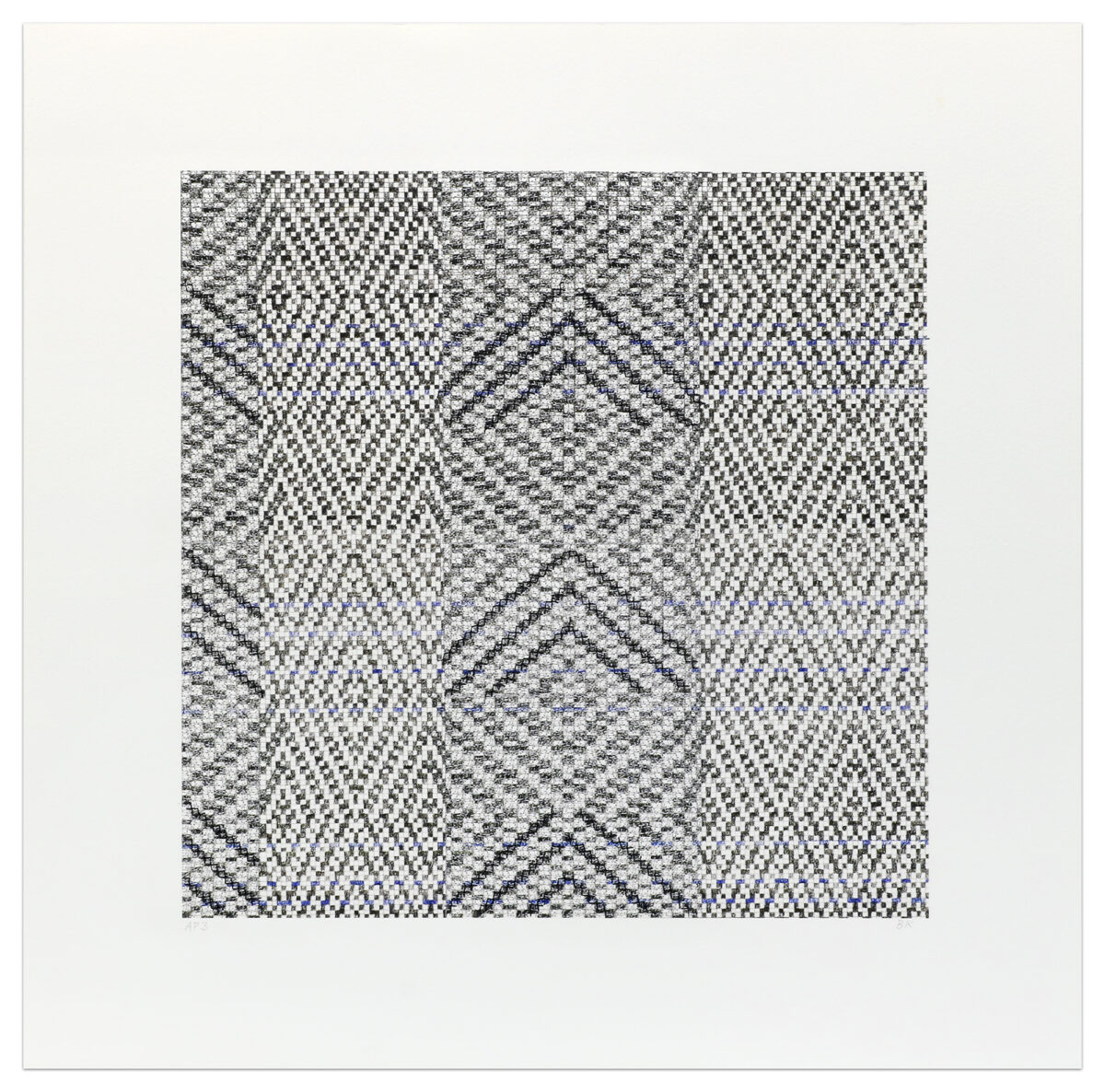
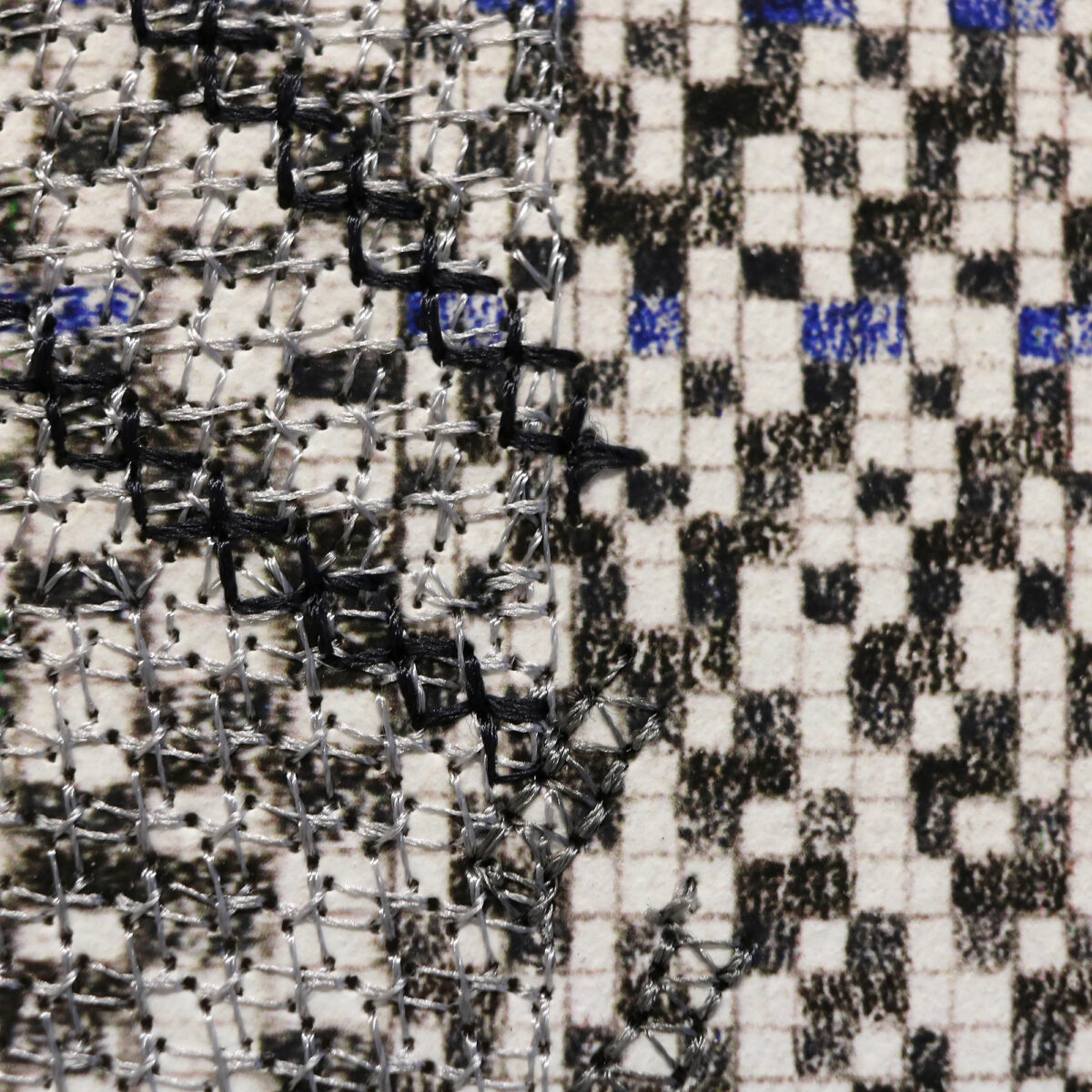
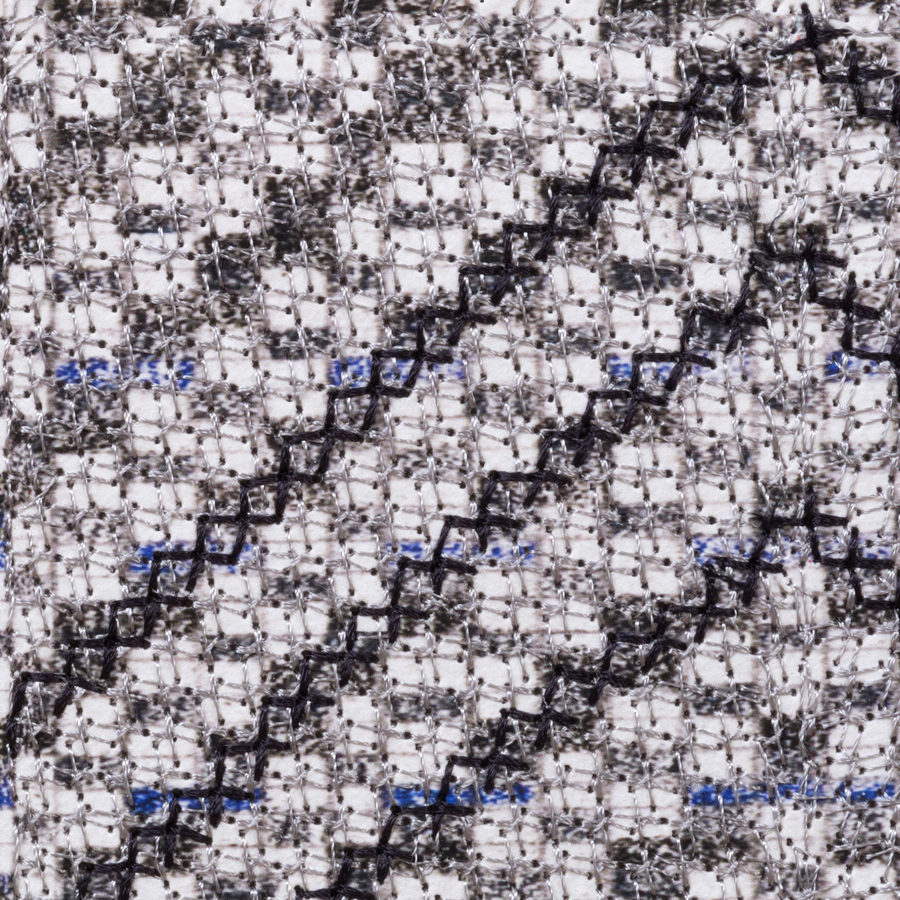
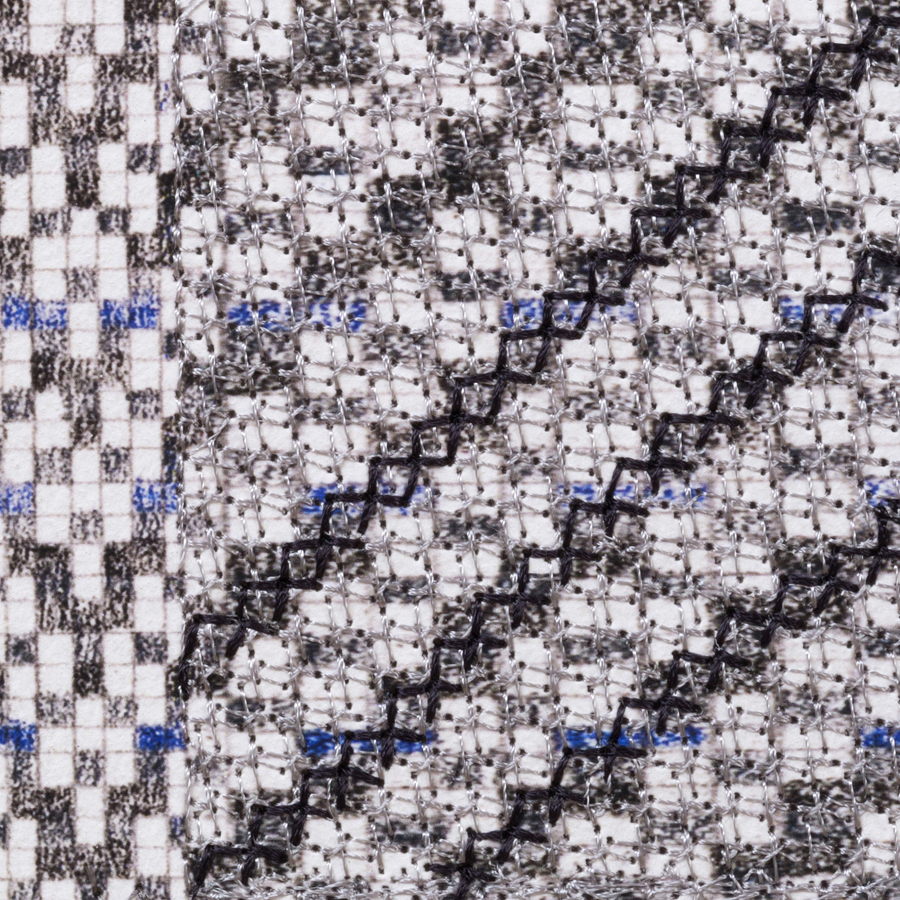
Edition of 6
Image size: 15 1/8 x 15 inches (38.4 x 38.1 cm)
Paper size: 21 1/4 x 21 1/4 inches (54 x 54 cm)
Frame size: 22 1/4 x 22 1/4 inches (56.5 x 56.5 cm)
Signed ‘BK’ lower right and numbered lower left in graphite
(Inventory #33783)
Edition of 6
Image size: 15 1/8 x 15 inches (38.4 x 38.1 cm)
Paper size: 21 1/4 x 21 1/4 inches (54 x 54 cm)
Frame size: 22 1/4 x 22 1/4 inches (56.5 x 56.5 cm)
Signed ‘BK’ lower right and numbered lower left in graphite
(Inventory #33783)
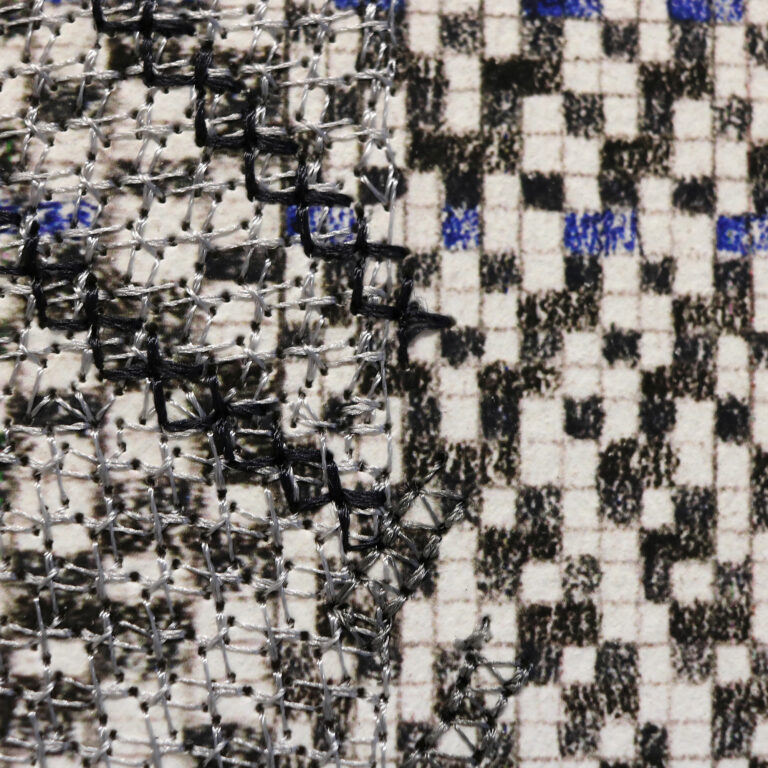
“In the late 60’s and early 70’s, we talked about threading tape on a video tape recorder, the tape passing the erase head, wrapping around the head drum, passing the sound and control track head, and set in between the pinch roller and capstan. If this wasn’t done correctly, your image would not record and playback properly.
In the mid-1970’s I wove, video recorded, and drew a work called “Text and Commentary,” where five weaving pieces made of threads of wool and linen faced a wall of 5 video monitors with the images themselves recorded and played back on magnetic tape which had been edited according to thread structures inherent to loom programming.
Until the present, threads (whether wool, linen, magnetic tape) have been for me both medium and metaphor and the technology that conveys them a clue to structure.”
Beryl Korot
The works exhibited at Krakow Witkin Gallery are Beryl Korot’s “Weavers Notations Variation 1” and “Weavers Notations Variation 2”, both from 2012. They derive from original hand-drawn weaver’s notations that the artist made in 1976 for “Text and Commentary” (a project first exhibited in 1977 at Leo Castelli Gallery and, in 2015, acquired by the Museum of Modern Art, New York). For these newer works, Korot imported the source drawings/notations into a computer, altered them and then outputted them as inkjet prints on archival paper. Furthermore, working with Judith Solodkin, a master printer and an expert in digital embroidery, Korot selected specific thread structures to be digitized and then chose particular threads to be sewn into the inkjet prints in specific ways to create different levels of transparency in relationship to the printed imagery that they were ‘covering’. The programmed structure of the threads allows the printed markings to be seen in a new way, adding texture, color, and depth to the surface of the work. The kind of stitching, its shape, and degrees of being open or closed to the drawn surface beneath challenges a viewer’s experience, creating opportunities for deeper looking at and exploration of the intersections of the imagery, the printing and embroidery, with digital, organic, original, and reproductive all being considered equally important.
Beryl Korot is a pioneer of video art (multiple channel work in particular). By applying specific structures inherent to loom programming to the programming of multiple channels, she brought the ancient and modern worlds of technology into conversation. Two early multiple channel works, “Dachau 1974” and “Text and Commentary” have been installed in exhibitions on both the history of video art and textiles. Her works have been seen at the Whitney Museum (1980, 1993, 2000, 2002); the Kitchen, New York, NY (1975); Leo Castelli Gallery, New York, NY (1977); Documenta 6, Kassel, Germany (1977); John Weber Gallery, NYC (1986); Köln and Düsseldorf Kunstvereins (1989 and 1994); Carnegie Museum, Pittsburgh, PA (1990); Reina Sofia, Madrid, (1994); Aldrich Contemporary Art Museum, Ridgefield, CT (2010); bitforms gallery, New York, NY (2012/2018); Whitworth Gallery, Manchester, England (2013); Museum Abteiberg, Mönchengladbach, Germany (2013); Institute of Contemporary Art, Boston, MA (2014); Tate Modern, London, England (2014); Center for Media Art (ZKM), Karlsruhe Germany (2008/2017); San Francisco MOMA (2016), The Museum of Modern Art, NY 2018), and Documenta Politik und Kunst, Deutsches Historisches Museum, Berlin (2021/22) among others.
Two video/music collaborations with Steve Reich (“The Cave,” 1993 and “Three Tales,” 2002) brought video installation into a theatrical context and have been performed worldwide since 1993.
Korot’s work is in both private and public collections including MoMA, NYC, the Kramlich collection’s New Art Trust (shared with Tate Modern, MoMA NYC and SF MoMA), LeWitt Collection, Thoma Art Foundation, and others. She is a Guggenheim Fellow, a Montgomery Fellow from Dartmouth College, a recipient of numerous grants from the New York State Council, the National Endowment for the Arts, and Anonymous Was a Woman.
10 Newbury Street, Boston, Massachusetts 02116
617-262-4490 | info@krakowwitkingallery.com
The gallery is free and open to the public Tuesday – Saturday, 10am – 5:30pm